According to You: The worst engines you’ve experienced
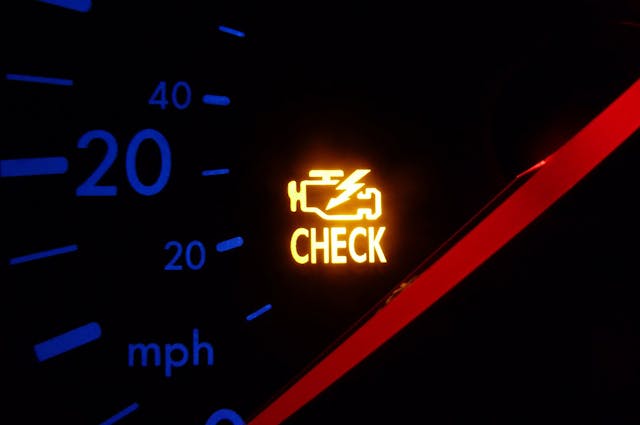
We recently asked about the worst engines you’ve experienced in your lifetime, and you certainly delivered. Perhaps too well, as the responses were overwhelming. How on earth could we cover all the bad engines made over the years? Our solution to this (wonderful) problem was thus: we thinned the herd down to responses that specifically included personal experiences that add a little more value than just the usual re-hashing of the same stories you’ve heard elsewhere.
Let’s get right to it!
The Iron Duke four-cylinder
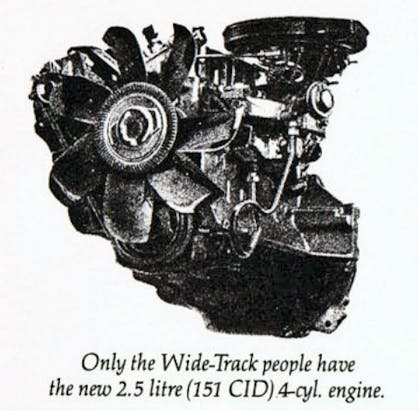
Charles A Parent said that the worst engine he ever owned was a Pontiac Iron Duke that “constantly ate Throttle Position Sensors and cracked the cast iron exhaust manifold three times.”
While the inclusion of TPS sensors suggests it might be the later TECH IV design, combining that with a four-speed shifter “that was prone to locking, in or out of gear” caused him to Lemon Law the car.
VW Type 412 1.8-liter flat-four
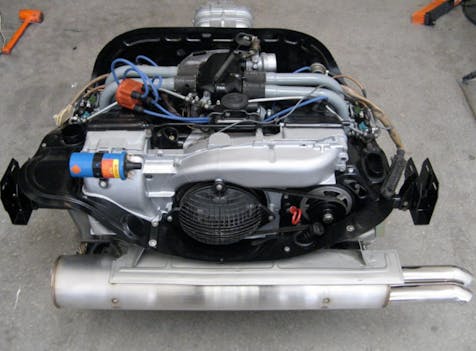
Hagerty Community user lasersailor came in strong with this one:
“I’ve got you all beat. 1679cc flat 4 in my parents 1972 VW411 wagon with a wimpy 3-speed auto transmission. Two fires caused by improper fuel injection repair at the so-called dealer in Florida. The 2nd fire caused near total immolation. Plus it was slower than a Pinto or Vega.”
Toyota 3VZ-E V-6

Hagerty Community member John Nichols gave a very balanced perspective on one of the more desirable and durable engines from Toyota, because sometimes tearing into something can turn into quite a shock:
“I recently got involved with a 1992 Toyota V-6 rebuild. The truck had a blown head gasket, the oil was full of water. Obviously these vehicles have a huge cult following of being amazingly reliable which I’m sure is well deserved.
HOWEVER when things do start to go it will cost you and assembly must be performed like a surgical operation. Parts and pieces and shrouds, crossover exhaust converters not to mention miles of vacuum lines weird little filters and of course the timing belt alignment are all part of the problem, not to mention the famous under the manifold sensor wire.
Ordinarily working on engines can be kind of fun be it a small block or an English roadster, although you have to make little tweaks often and pay attention to detail the reward of a few hours attention is measurable performance improvement.”
Chrysler 2.2-liter four-cylinder

This one might spark some controversy, as Chrysler’s 2.2-liter engine was designed specifically for a new platform and a new automotive reality. That said, Hagerty Community member David likely had an older model, but his experiences are certainly worth a read:
“As I recall memories of the early 80’s K Car with that darn 2.2 liter I feel a tension headache coming on. That engine had more use as a boat anchor, and I remember my poor dad spent more time and dollars repairing shoddy engineering design.
Crazy but true, when I got my licence and started to drive – I took that K Car to town and the engine actually fell out of the car! The front motor mount failed in the middle of an intersection. I guess even the car itself was sick of that engine and tried to spit it out.”
I reckon that A. Raymond had it even worse, but at least the dealership asked him a rather hilarious question:
“I had a Chrysler 2.2 non turbo forced upon me as a young fellow. Driving home from work in rush hour traffic, the engine decided it was time to digest itself. (It had 25,000 miles on it at the time.) The dealership accused me of ‘racing’. I laughed long and hard at the suggestion and told them I wouldn’t be doing too much racing with 88 hp.
After begrudgingly replacing the motor under warranty, I drove it another 3 months before selling it to another unfortunate schmuck. It was the worst thing I have ever had the displeasure of having to drive. I look back now and still laugh at that ‘you must have been racing’ suggestion.”
Oldsmobile Quad 4 four-cylinder

Brian was pretty sick of the Iron Duke in his 1985 Cutlass Calais, noting it was reliable but also “noisy and weak.” So imagine his delight when the Quad 4 made a splash in 1987:
“I was so excited to get one of the first Quad 4s. More power and much quieter. My love affair ended at 67,000 miles when it had a complete meltdown out of warranty. My very last GM car.”
And then we heard from Tom:
“Yes, I had the Quad 4 in a Pontiac Grand Am. Delightful, until the head gasket failed. Dealership near my work (different state from purchase point) tried really hard not to cover the failure but, after showing how much coolant I was adding, did a cheap fix. Probably tore it down to only replace the head gasket because it failed again, just out of warranty.
At that point, I was back where I bought the car, and they repaired it again, but it still didn’t seal. Any time I got in traffic, it would overheat and blow out the coolant. Tried checking the cooling system (radiator, etc.) without finding any issues. Aluminum head must have been significantly warped by that point. Finally sold that car. Too bad as it was fine as long as it was moving.”
Honda CVCC four-cylinder

Dan T Man takes us over to Honda, a brand we don’t usually hear about in this context. But he noted that the “1751 CC engine in the original Honda Accord was known to develop a head gasket leak between the #3 and #4 cylinders every 30,000 miles.” He said that it ran fine otherwise, and learned that “when the engine lost about 50 rpm at idle it was time for another change” of the head gasket.
AJD went further:
“My first brand-new car was a 1977 Honda Civic CVCC. Within 60K miles it had eaten 3 water pumps and blown its head gasket. The head gasket had been recalled but would not be replaced until blown. It really blew up nicely and the engine never ran right again.”
Buick 3.8-liter (Malaise Era) V-6

Don’t take this as a slam on Buick’s tried-and-true, 90-degree, 3.8-liter V-6. Odds are the problems that Dwayne Wertman experienced came from the Malaise Era engineering mounted to its induction and exhaust systems.
“I bought a new 1981 Oldsmobile Cutlass V-6. The engine would ping and rattle just trying to keep up with traffic. Often times it would stall in the intersection. I returned to the dealership on many occasions. It was a really good dealership, [because] after eight months they bought back and all I lost was tax and license.”
eagerdever drives home the point of this being an issue from the 1970s and early 1980s:
“I experienced oiling problems accompanied by valve train noise and the engine light in a 3.8 V-6 in a ’79 Olds Cutlass wagon. I’d stop and let the engine cool down, and then be on my way. The crankshaft finally broke in half. Because it broke on the diagonal, the engine continued to run, though poorly. A co-worker had similar problems with that engine in a Grand Prix, replaced under warranty. Another co-worker lost the engine in his Buick Skyhawk (the Buick version of the Chevy Monza). All three were due to poor oiling.”
Mitsubishi 4G54 four-cylinder with Mazda sprinkles
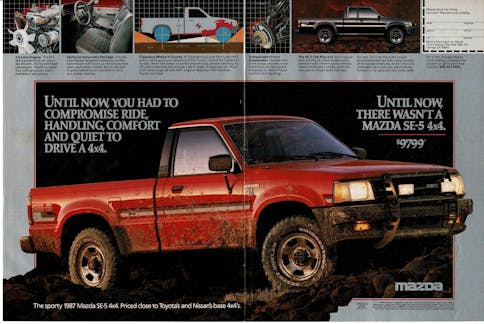
While the Buick was a victim of engineering mandates of the era, apparently Mazda shot themselves in the foot with a half-baked design made with no third-party intervention! Check out Arthur Hill’s fascinating tale of deceit:
“In 1988, as my family grew to 4, I needed to trade my Toyota 4X4 Pickup for one of the new ones with actual back seats to hold the two children. Unfortunately Toyota did not produce one until a few years later, but Mazda had a very nice looking B2600 4X4 that had back seats. This truck had the worst engine I ever had to deal with. I quickly discovered that if you really put your foot into it under a load, the engine would stutter and almost stall. Many trips to the dealer failed to solve this issue.
Finally a mechanic took me aside and admitted that Mazda rushed the truck into production without having an engine big enough, so they used a Mitsubishi 2.6 engine instead, but to make it easier to work on for their service people, they adapted their own accessories including the carburetor. Under load the only way the engine could get enough fuel was to link both barrels together all the time.
Needless to say, Mazda dropped this truck and you never see any on the road. Terrible truck with a terrible engine, but the actual Mitsubishi 2.6 engine was probably fine in their own vehicles.”
Mitsubishi 4G54/Chrysler HEMI 2.6-liter four-cylinder

No, not that Hemi. Or that one. We’re talking about the hemi-headed Mitsubishi 2.6-liter used on the Chrysler K-car and its derivatives. Chris Harshman said that the “worst engine I ever had was a 4-cylinder Mitsubishi engine in my 1982 Dodge 400. I used to joke with my friends that I could accelerate from 0-to-35 in 12 seconds.”
Subaru boxer flat-four/flat-six
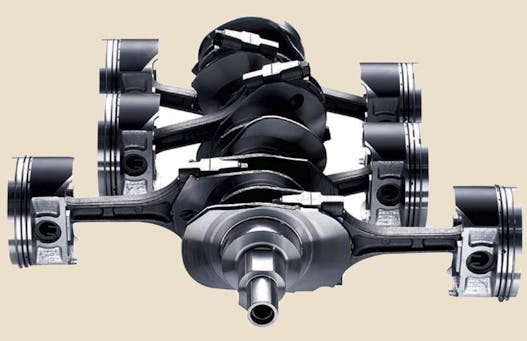
BobJ chimed in with one of the more offensive engines in modern history: the head gasket-munching Subaru boxer. But unlike other stories here, he made the same mistake twice.
“Had a 2005 and a 2010. Both blew head gaskets. Out of warranty but I complained and Subaru of America paid for half. Everyone complains about poor head gasket design & construction but I also wonder about open deck block design.”
GM 2.4-liter Ecotec four-cylinder
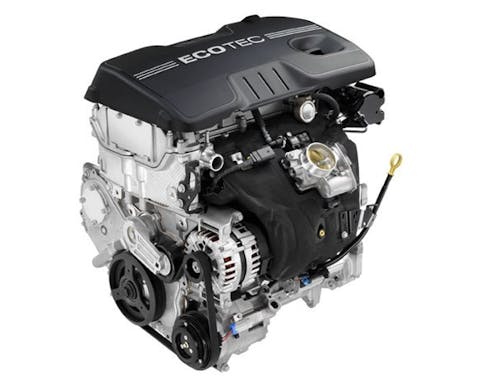
Hagerty Community member Rob keeps us in a more modern era, with a problem with the Ecotec 2.4-liter mill in his 2010 Chevrolet Equinox.
“Here’s a counterpoint for everyone who marvels at the reliability of modern cars. Launched just after GM’s bankruptcy, I should have known they probably cut corners on validation but couldn’t pass up a nice sized SUV that cracked 30 mpg.
It went through numerous high pressure fuel pumps. The timing chain tensioner went bad. The variable cam timing system went out and timing chain would slap like crazy when you started it. It had a bad heat treat on a pin in the cam shaft. Started burning over a quart of oil every 1000 miles and was rebuilt under warranty just before 50k Powertrain warranty expired. And I never got anywhere near 30 mpg on the highway.”
Ford 1.5-liter Ecoboost four-cylinder

Steve notes that his 2015-vintage, 1.5-liter, Ford EcoBoost engine is “absolute garbage compared to every other engine I’ve had the pleasure (or displeasure) of operating.” His example needed a new long block after 60,000 miles, and this helped him create a visionary notion about the EcoBoost’s promise of power and efficiency in a single engine:
“The reality is that you can’t have it all and ultimately lose out due to the extra complexity and stresses on the engine. I am not sure if the other EcoBoost variants are like this and I don’t care to find out personally.”
Holden Starfire four-cylinder

Mr. Nigel Utting takes us to the Land Down Under, reminding us that “GM Holden came up with an abominable 1.9 liter 4 cylinder named the Starfire.” The lack of power likely made Nigel’s comments far from the minority, with fuel economy numbers there were disappointing to boot:
“Based on a cut down six, this god-awful thing used to have a couple of seconds delay between hitting the accelerator and responding, a bit like downloading revs of the internet with a slow connection.”
Ford Cologne V-6

While Ford of Germany contributed greatly to the automotive landscape in Europe and the USA alike, Patrick Abbott reminds us that the Cologne V-6 wasn’t necessarily one of them. His example “regularly destroyed rocker arm assemblies and main bearings” while Richard Eaton was truly cursed with a lemon:
“I purchased a new, 1990 Ford Ranger with the 2.9-liter V6. Should have seen this coming when the transmission had to be replaced 4x for porous castings, and then both heads cracked under a recall. But then less than 50k miles after those heads they were again cracked sufficiently to turn the oil white in 1000 miles. Never again will I buy Fords.”
The Oldsmobile Diesel V-6

TerryTwoUtes picked up an example of an engine that history hasn’t looked too favorably upon: the Oldsmobile diesel.
“My parents had a ’78 Oldsmobile Delta 88 diesel, the dreaded 350 diesel engine derived from the gasser engine. After about 5–6 blown head gaskets and even one full short block replacement, it was finally traded off. Only good thing was GM trying to save face and all of those repairs were covered under extended warranty.”
Cadillac HT4100 V-8

Speaking of obvious punching bags, Hagerty Community member Coffeyclan reminds us all how low Cadillac went upon the introduction of this “High Technology” motor:
“The worst was Cadillac’s HT4100 engine. Acceleration was at a snail’s pace, the timing chain went bad twice, etc, etc, etc. I sold this car before the warranty ran out!”
Detroit Diesel “Fuel-Squeezer”

The one, the only, the legendary DUB6 threw us a curveball, thanks to his experience driving commercial trucks:
“In the mid-’70s, I drove longhaul truck for a fleet operator that leased their rigs. Most of the trucks had Cat engines and either 13 or 18 speed transmissions. As fuel prices rose during the embargo period, the leasing company offered up a Kenworth needle-nose with Detroit Diesel “Fuel-Squeezer” and 6 speed tranny to test out. Guess who was low enough on the pole to get picked to drive it for what was supposed to be 3 months?
That thing was so gutless – and the gear ratios so far apart – that even on the slightest grade, I was lucky to be able to manage 20 mph, loaded. Empty, it might get to 50 downhill, but then of course, there would be a corresponding upgrade. Fuel squeezing? Hardly. Most of the big Cats were averaging 4.5-5 mpg. This little longnose managed about 6.0 – mostly because the throttle had to be just about wide open all the time just to maintain forward momentum.
Maybe would have been fine for a flat-land operation, but in the mountainous WEST, it was pretty sad. My trips started taking up to twice as long as was projected, and several appointments would be missed every week. After about 8 weeks, the truck went back to Kenworth!”
Toyota 18R-C four-cylinder

Let’s be clear on one thing: This isn’t a slam on all Toyota 18R engines, only the California-spec motor aimed at reducing emissions. Pete notes that the 18R-C was never designed for durability:
“I am a car guy and former auto mechanic. By far the worst designed and engineered engine was a Toyota 18R-C. I have had experience with more than one, and they all burned valves every 15,000 miles even after Toyota did a factory upgrade to “fix” the problem (which it did not). I drove the car for 75,000 miles and did 5 valve jobs before I woke up and sold it for $500, it did have a good clock though.”
Chevrolet 2300 four-cylinder

Of course the 2300 motor would make the list, as there were three negative comments to this effect. It didn’t help that the early Vegas weren’t the most reliable dance partner, and NCB chimed in with a personalized tale of ownership:
“I owned a 1973 Vega GT. Yes, I’m dating myself. First, and worst car I ever owned. Engine overheated due to poor cooling system design which led to scored cylinder walls in the aluminum block. It drank oil! Bad valve stem seals and “rusting away to nothing in 5 years” were icing on the cake. MotorTrend Car of The Year in 1971!”

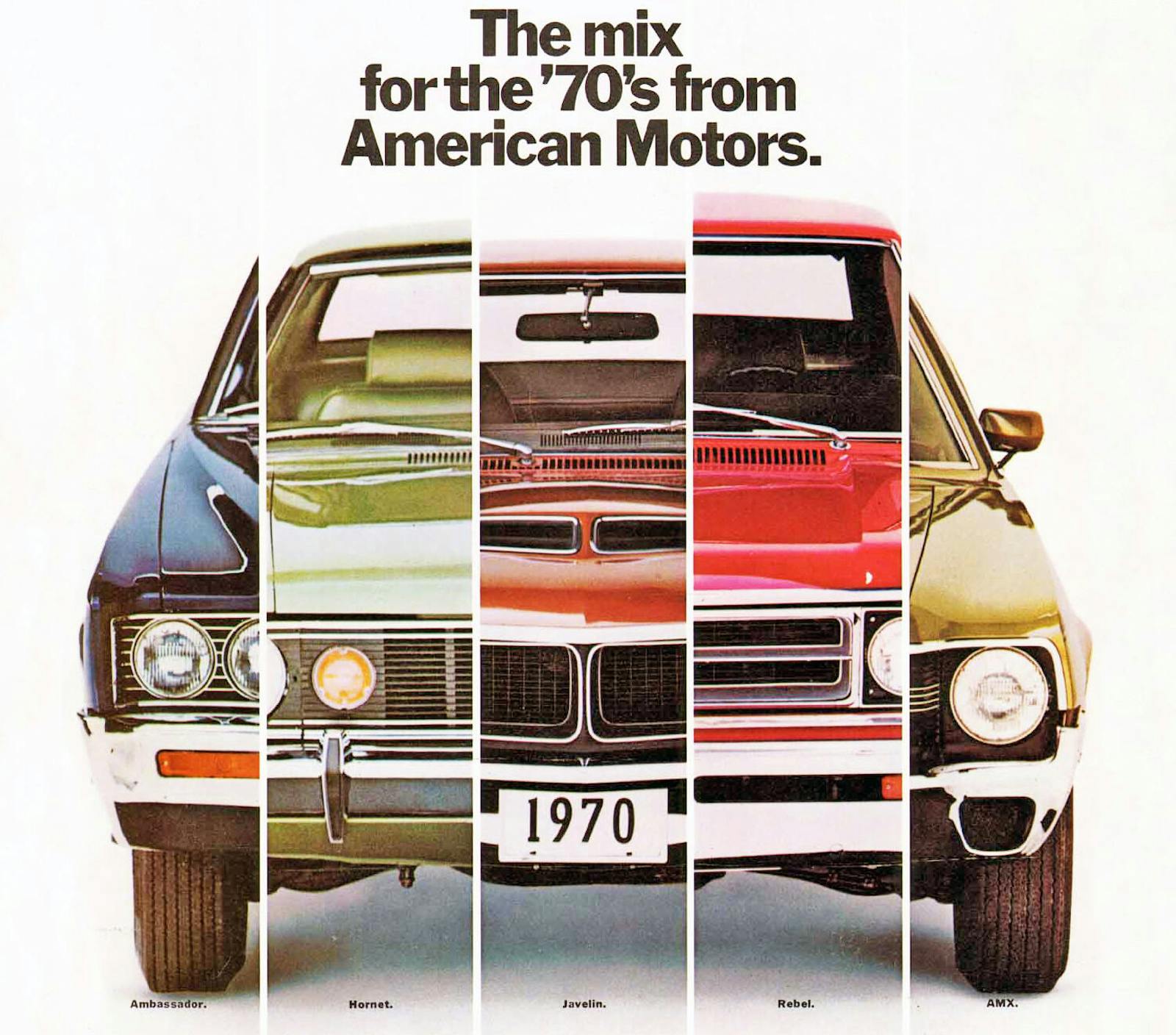
I worked for Subaru for many years processing warranty claims. I’ve also owned quite a few of their cars. The head gasket issue was mostly a N/A 4 cylinder problem. The turbo and 6 cylinder engines rarely needed head gaskets prior to reaching 100,000+ miles.
As was mentioned in the article, a lot of those N/A 4 cylinders needed head gaskets AFTER the warranty had expired, which does not sound like a problematic engine to me (and Subaru was really good about helping cover the cost of replacements, despite being out of warranty).
I ran an all makes shop between 2016 and 2019. Considerably more than half of the engine work we did was on Subarus. They are not as good as other cars. We hired techs from the local Subaru dealer, but it was still impossible to keep up with the demand for Subaru reseals. It is true that most of the engines we worked on were naturally aspirated flat fours, but it is also true that most Subaru engines on the road at the time were naturally aspirated flat fours. The only engines we saw fail in anywhere near the numbers of Subaru’s were Ford Triton V8s and V10s, and those tended to be older, were sold new in far greater numbers, and often were used in work vehicles.
We also saw plenty of WRXs with engines that were beyond repair after the dealers encouraged young men buying new cars to chip-tune them and void the warranty. I wouldn’t recommend a Subaru to anyone I like. Unfortunately, some people I care about buy them without asking my advice. My niece’s Outback is long gone, but a dear friend has a dead Outback H6 in her driveway. Another friend’s son received a new WRX a couple of years ago. The dealer tried talking him into the chip-tune, but he declined. The engine failed anyway. Then they tried declining warranty repair for skipped oil changes. Fortunately, my friend had the receipts. Still the Subaru dealer fought it, although they finally lost. Now the kid has a new Tacoma. I guess Subaru figures their customer demographic is growing, but EVs could that end the way Teslas replaced Priuses in expensive So Cal neighborhoods.
Your comment on the H6 doesn’t inform us about what the problem is.
Those engines are good and will last into the high mileage range if kept right.
The H4 had problems but could be fixed. The turbo engines are a different story and not the main stay of Subaru.
The H6 is in a rural community about an hour and a half from the Subaru experts that I know. I don’t know what is wrong with it, since I don’t have any way of having it diagnosed. I just know that it leaks, can crank but doesn’t start, and the engine spins quite a bit more freely than would be expected if it had compression. I’m also told that whatever went wrong happened during a cold start in the driveway.
You don’t have to fix inherent faults in engines from good car companies. True story.
I owned back to back GM 80s junk, my 79 Grand Prix had a 301, that was a star, compared to my 80 Grand Prix that had the famed Buick 231 v/6 which pinged and knocked and drank oil, so I said enough, I bought my 3rd new GM junk in 4 years, 1983 Buick Riviera with Oldsmobiles anchor 307 4 barrel, what a turd, it smoked, it was anemic, the only way to pick up speed was to drop it off the top of a building, GM really killed itself in the 80s, finally got me back this past year with my Cadillac CT5 Premium Luxury, bi turbo V/6,
A couple of comments although this thread could be endless: The “K” car 4-cylinders during the Iacocca era were Volkswagen short blocks. Next, the 3.8 V6 Buicks was one my father-in-law owned brand new and the engine blew with 1800 miles on it on the way to vacation. A dealer close by fixed it but it didn’t last. Engine shaking and not smooth. Brought it back to the original dealer who disassembled the motor and the pistons had been put in backwards! it was never right after that. Add insult to injury, on the way home from the second repair, a waste collection truck backed into him at a hilled intersection! It was his first new car ever after he retired!! He unloaded it and got a Nissan Altima and never looked back.
No K-car ever had a VW short block, that was the L-body (Omni/Horizon) which came out a few years before the K-body. The base engine (and only option for a couple of model years) was a VW engine, and then the Chrysler 2.2 became available as a more powerful option. In the K-body, the 2.2 Chrysler was the base engine from the start, with the Mitsubishi 2.6 (definitely one of the worst engines of all time) as a more powerful option. Never a VW, though, and the VW base engine in the L-body was replaced with a Pugeot-sourced engine the last few model years (almost none sold, the 2.2 was much more popular).
Well, just think…in about ten years from now, or maybe longer, when EV’s take control of the roads…all of these issues will seem like by gone memories…:-)
…in your wildest dreams!
Just because a couple of readers complain about an engine doesn’t mean it should make this list. I think a better thing would be for automotive writers to make a list of engines have a much wider reputation for being bad.
From reading many articles and posts over the years, these immediatley come to mind:
Caddy 4-6-8
Caddy Northstar
GM Diesels
Chevy Vega 4 cyl w/ aluminum block
Ford F-150 5.4 Liter V8
Mitsubushi 4 cyl that snapped timing belts before 50K and killed engine
And the list goes on.
I had two Olds Aurora Northstar cars, could get 180k on each. They have problems with the Head Bolts would strip out. There is a company in MI that put stainless steel threads in and solved the problem. There were some Alternator problems due to cooling issues. My impression is they were good for the Era.
Had a 1987 Subaru XT, which was their small sports type that had the Subaru boxer flat-four engine which was a real piece of crap. Similar in size & style to a 1980s Toyota MR2, but had a small rear seat that could seat 2 kids or small adults. Also had 2 pod extensions protruding from each side of the steering wheel that had push button controls. Very aircraft styling that my wife thought was cool. While the car had a great sporty look, the engine was a piece of crap & was back into the dealership for lifter tapping every 20.000 miles. I could have had a Mustang 5.0 GT for what I paid for this Subaru & loved never buying another Subaru product again. https://duckduckgo.com/?q=picture+of+a+1987+subaru+xt+&t=h_&iax=images&ia=images&iai=https%3A%2F%2Fassets.shannons.com.au%2FOUD45M5A5UC0M94%2FQ39W083VDER8047%2F5ffuroollwtxdbiu%2Fjpg%2F2400x1800x3%2Fvehicle%2F1987-subaru-vortex-xt.jpg
Bought a new Dodge Omni in 1985. 2.2 litre with a 5 speed manual transmission. One of the most reliable and economical vehicles I have ever owned. Went almost 200,000 miles with no major issues.
Wow. If we are going to use a single anecdote as the basis of good or bad, then Hagerty’s is a crap publication, because this was the worst garbage I’ve ever read.
Matt – but the article didn’t profess to name any engine as good or bad. It simply asked readers – quite literally asked them – “the worst engine you’ve experienced”. Simply asking for a one-off personal experience comment. Hagerty hasn’t declared anything – it simply has asked us to make our personal experiences known. Some of the commenters have used that opportunity to make sweeping declarations based on their own issues with particular engines – but that’s on them. Don’t take it out on Hagerty!
Agree with all of them.
Add, Olds 4.3 V6 no balance shaft diesel. Junk.
All Ecotec GM engines are garbage. 80k ring jobs, no more than 100k on timing components.
The GM/Daewoo 1.4 turbo engine, a total disaster. Can’t hold any vital fluids, sounds like an Iron Duke and runs at 224-238 degrees as normal operating temp, cooking everything in the engine compartment.
Ford/Navistar 6.0/6.4 diesels, time bombs waiting to happen.
Nothing quite like a Chrysler 2.71 V6. Water (coolant) in the crankcase, spun bearings, sludge galore.
My sons Sebring was barely out of warranty when the engine failed. Of course Chrysler would not fix or replace it although they had done all oil changes and maintenance on the vehicle. Checked the wreckers and were told the yards were full of failed 2.7’s but finally found one for 1500 bucks. Swapped it out and sold it quick. The dealership called shortly afterward and wanted to sell him a new car. Boy the nerve of some people.
I loved my 75 Honda CVCC. I beat the snot out of it, 6000 rpm shifts were the norm. My brother bet me it wouldn’t make 50,000 miles. I sold it with 94,000. I miss that car. Now the Vega engines. They should of came with a bus schedule in the glove box. JUNK. 🥴
Hard to believe there was no mention of the 2.7 Volvo V6 (PRV) The approved method for replacing rocker shafts was to cut holes in the firewall and do the job from inside the car. And that was the easy job. Water pumps would have been a breeze – if the bolts had gone front to rear instead of rear to front. And the clue to a bad water pump was getting anti-freeze inside the distributor.
The Cadillac Northstar belongs on the list ahead of the 4100
I have had three of these engines and had great experiences with them all.
I had an 85 Charger 2.2. The car was a slug with I believe about 90 hp, but I put about 60K miles on it in three years and it ran flawlessly except for a squealing alternator belt at startup that made me wildly unpopular in my apartment complex. When I left at 5:30 a.m. it woke up a lot of neighbors. Nothing, new belts, new pulleys, new tensioner… nothing solved that one. But the engine was pushed to the limit by me and it didn’t break.
My 1992 Subaru Legacy with a 2.2 flat four went 315K miles before it was retired. Never had so much as the valve cover gaskets off the car – just oil and tune-ups and it just kept running. One time I went to change the oil after going far too long and I found that it had a little over a quart of oil left in the pan, and the engine was unaffected.
My 1973 Capri had (I believe) a 2.6 Cologne V6 and I had a 2.9 in my 89 Bronco II. The Capri was hot rodded – 4 bbl intake, 390 cfm Holley, Dobi cam, headers. It was a fun ride! My Bronco went 175K carefree miles, and I gave it to a nephew, and he drove it another 100K miles before selling it. Never had a problem with either engine.
Surprised that the Vega engine was listed last. I was one of the three votes for that one. My girlfriend at the time purchased a bright yellow with black center stripes and rally wheels. It did look great and was actually fun to drive when it was new. Didn’t take to long to find that it was a real POS. Engine needed replaced after only two or three years as I recall – never even got to any of the rust problems before she traded it for an El-Camino that was great.